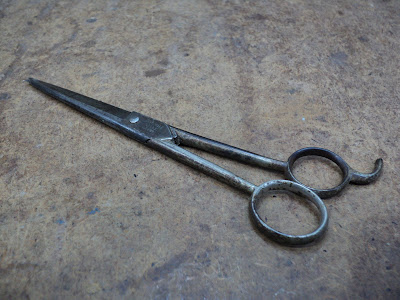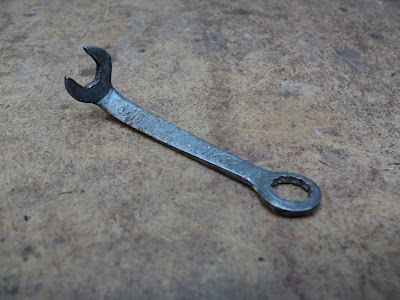 The maker was A. McGillivray Chemicals Ltd., Paris, Ontario, Canada. From what I can find of 'A. McGillivray Chemicals' on the internet, that company was dissolved in 1988, so this stuff had better have an indefinite shelf life if I'm to get any use out of it. I'll try it out and see how it goes.
The maker was A. McGillivray Chemicals Ltd., Paris, Ontario, Canada. From what I can find of 'A. McGillivray Chemicals' on the internet, that company was dissolved in 1988, so this stuff had better have an indefinite shelf life if I'm to get any use out of it. I'll try it out and see how it goes.- - -
This low-tech stuff is the cat's meow, so to speak. Fill the lamp, get the wick thoroughly soaked, light it, put the chimney in place, adjust the wick/flame height and it works perfectly, like so.
 There we are -- a time machine. Welcome to the year 1912. (The book in the photo was originally published in 1910.)
There we are -- a time machine. Welcome to the year 1912. (The book in the photo was originally published in 1910.)I'll stash what's left of the oil in the storage room along with other precious fluids, like motor oil and bottled water and Tobasco sauce.
# # #
# # #












































